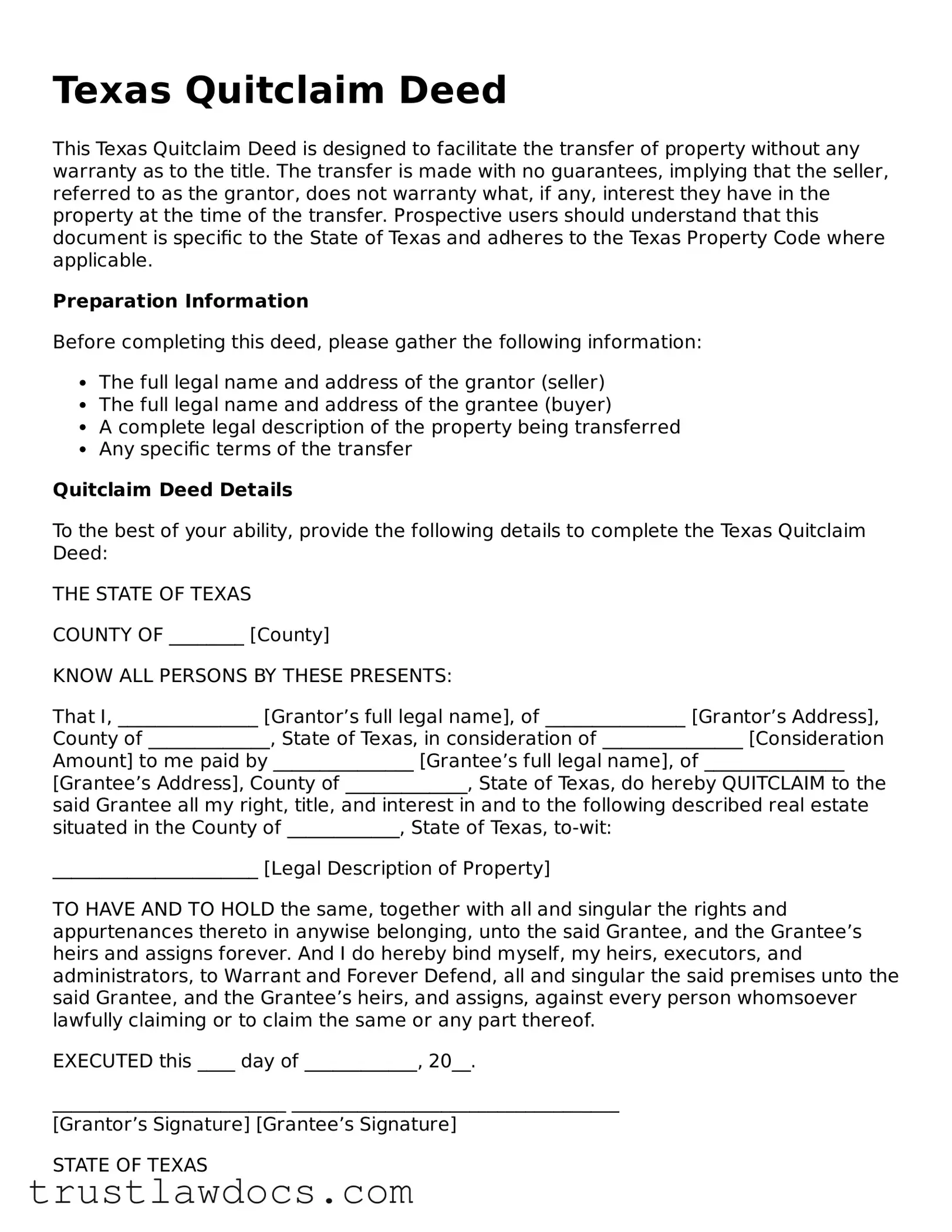Texas Quitclaim Deed
This Texas Quitclaim Deed is designed to facilitate the transfer of property without any warranty as to the title. The transfer is made with no guarantees, implying that the seller, referred to as the grantor, does not warranty what, if any, interest they have in the property at the time of the transfer. Prospective users should understand that this document is specific to the State of Texas and adheres to the Texas Property Code where applicable.
Preparation Information
Before completing this deed, please gather the following information:
- The full legal name and address of the grantor (seller)
- The full legal name and address of the grantee (buyer)
- A complete legal description of the property being transferred
- Any specific terms of the transfer
Quitclaim Deed Details
To the best of your ability, provide the following details to complete the Texas Quitclaim Deed:
THE STATE OF TEXAS
COUNTY OF ________ [County]
KNOW ALL PERSONS BY THESE PRESENTS:
That I, _______________ [Grantor’s full legal name], of _______________ [Grantor’s Address], County of _____________, State of Texas, in consideration of _______________ [Consideration Amount] to me paid by _______________ [Grantee’s full legal name], of _______________ [Grantee’s Address], County of _____________, State of Texas, do hereby QUITCLAIM to the said Grantee all my right, title, and interest in and to the following described real estate situated in the County of ____________, State of Texas, to-wit:
______________________ [Legal Description of Property]
TO HAVE AND TO HOLD the same, together with all and singular the rights and appurtenances thereto in anywise belonging, unto the said Grantee, and the Grantee’s heirs and assigns forever. And I do hereby bind myself, my heirs, executors, and administrators, to Warrant and Forever Defend, all and singular the said premises unto the said Grantee, and the Grantee’s heirs, and assigns, against every person whomsoever lawfully claiming or to claim the same or any part thereof.
EXECUTED this ____ day of ____________, 20__.
_________________________ ___________________________________
[Grantor’s Signature] [Grantee’s Signature]
STATE OF TEXAS
COUNTY OF ________ [County]
On this day, personally appeared before me, _______________ [Name of Notary], a Notary Public in and for said County and State, _______________ [Name of Grantor], known to me (or proved to me on the oath of _______________) to be the person whose name is subscribed to the foregoing instrument and acknowledged to me that he/she executed the same for the purposes and consideration therein expressed.
Given under my hand and seal of office this ____ day of ____________, 20__.
_________________________
(Notary Public)
My Commission Expires: ____________
